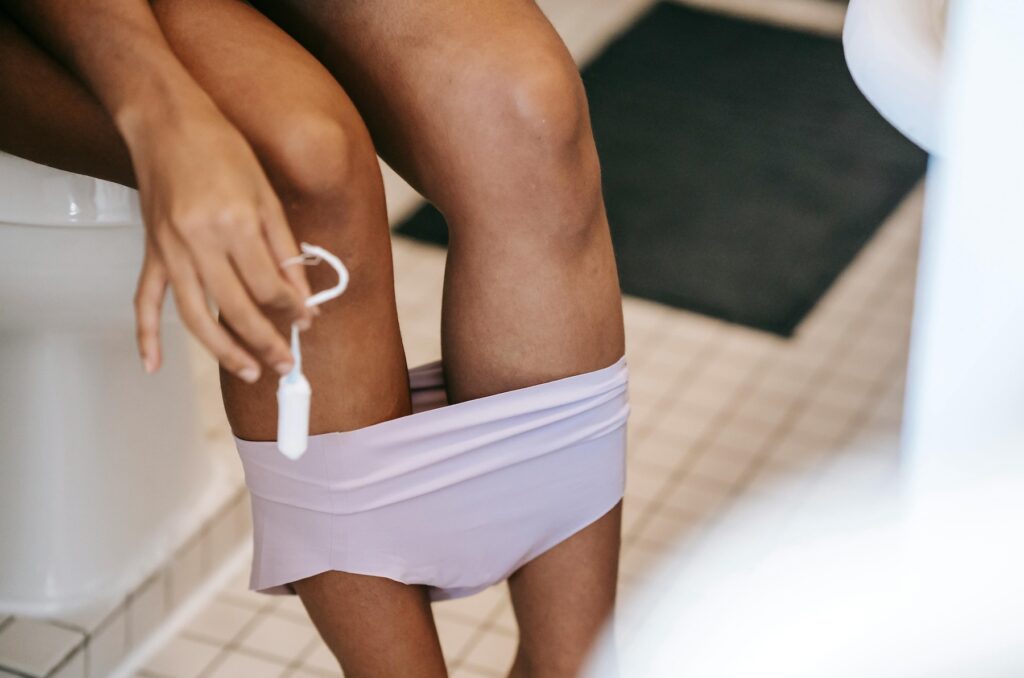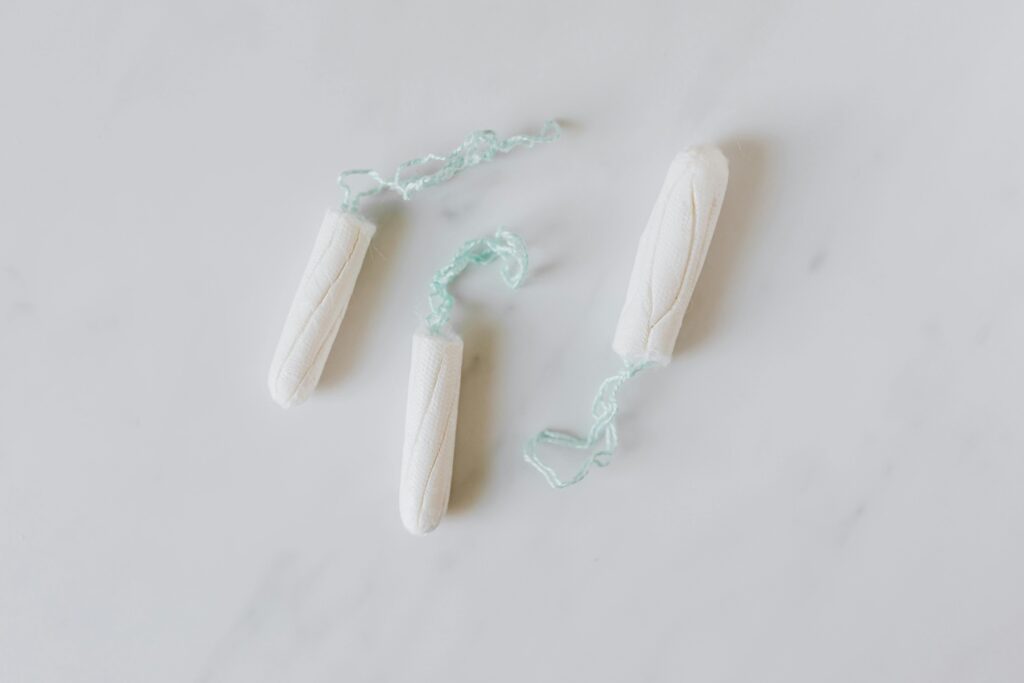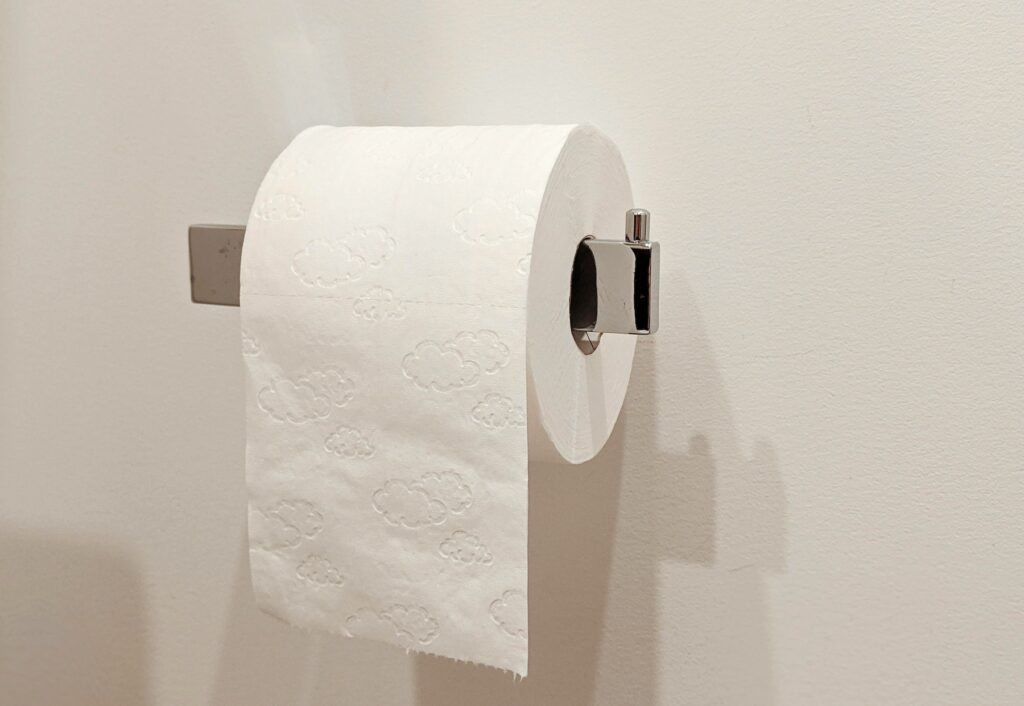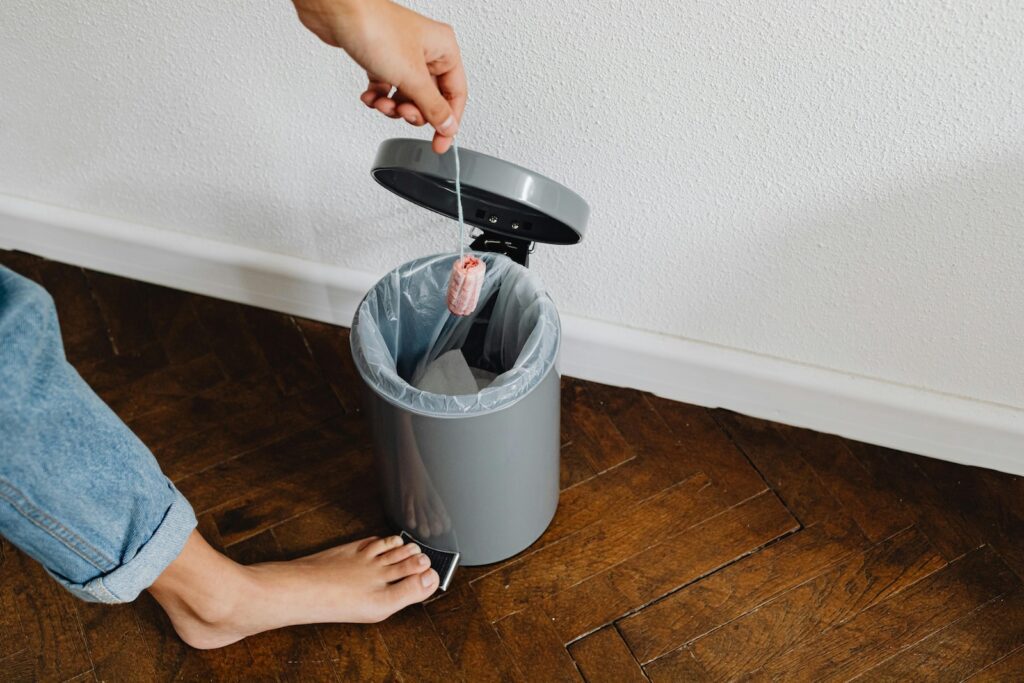Can you pee with a tampon in? The short answer: yes. Your urethra and vagina are separate openings. Peeing doesn’t affect the tampon or how it functions.
Tampons are designed to work with your anatomy, so you don’t have to remove them every time nature calls. This means you can leave it in while you urinate without any worries about hygiene or safety.
Let’s break down the facts and tips about proper tampon hygiene.
Your Cheat Sheet
Here are highlights of this article:
- Yes, it’s safe and sanitary to pee with a tampon in.
- Your tampon stays in the vagina, while urine exits from the urethra.
- Replace the tampon only when it’s full or after 4–8 hours.
- Keep the string out of the way to avoid it getting wet.
- If your tampon slips, it may not be inserted deep enough.
- If you have a UTI, change your tampon after peeing and seek medical help.
How the Anatomy Works
To understand why you can pee with a tampon in, here’s a quick anatomy refresher.
It all comes down to simple anatomy: urine exits through the urethra, period blood flows from the vagina, and poop comes out of the anus.
The urethra and vagina are both part of the vulva, which also includes the labia majora (larger lips), labia minora (smaller lips), and clitoris. When you gently open the labia folds (Tip: it’s okay to explore with a mirror!), you’ll notice that what appeared to be a single opening is actually two.
The urethra (where pee exits) and the vagina (where tampons go) are two separate openings. The tampon sits snugly in the vagina and doesn’t block the flow of urine. The string may hang down, but it doesn’t interfere with peeing.
Currently, no research suggests any medical reason to remove a tampon immediately after urinating. Obstetrician-Gynecologists also say it’s perfectly safe for women to pee with a tampon in.
Why Does My Tampon Always Get Wet When I Pee?

The most common reason the tampon gets wet is the tampon string getting in the way. Since it hangs outside your body, it can soak up urine if you’re not careful.
If the tampon itself feels wet, it could be due to improper placement. Remember, tampons are designed to absorb menstrual blood, not urine. To avoid this, it’s a good idea to practice proper tampon hygiene.
Tips For the Proper Use of Tampons

To make tampon use as smooth as possible, here are quick tips:
- Hygiene Matters. Wash your hands before and after inserting or removing a tampon.
- Placement Matters. Insert the tampon high enough that it feels comfortable and stays in place. Insert the tampon until the applicator (or your finger) is fully inside.
- Change the Angle. If inserting the tampon hurts or feels blocked, try adjusting the angle. Taking deep breaths can also help relax your muscles and make it easier.
- Keep the String Dry. To keep the string dry, hold the tampon string out of the urine stream while peeing or push it to the side when peeing.
- Dry the String. If the string does get wet, pat it dry with some toilet paper or replace the tampon for freshness.
- Change Regularly: Replace your tampon every 4–8 hours or sooner if it’s saturated.
Some women prefer to change their tampons before or after using the bathroom, either to avoid the discomfort of a wet string or concerns about odor. This is also very okay!
Can I Choose Any Tampon?
Women’s health doctors advise against using scented tampons, as research shows that added fragrances can cause irritation. Stick to unscented, hypoallergenic tampons or pads to reduce irritation and maintain a healthy pH balance.
What Happens When You Pee with a Tampon In?

When you pee, generally speaking, the urine comes out through the urethra and doesn’t touch the tampon. So, can you pee with a tampon in? Yes, the tampon usually stays dry and continues to absorb your period flow.
The main thing to remember is to watch the string! It might get wet while you pee, but don’t worry — this isn’t a problem. For most healthy women, urine contains few or no harmful bacteria.
However, if you have an infection in the bladder or urethra it could affect the sterility of your urine. The infection may transfer bacteria to their genitals and cause a urinary tract infection (UTI). In that case, it’s advised to change your tampons every time you urinate with the treatment your health care specialist has recommended.
Risks Related to Tampon Use

While tampons are generally safe to use, there are some risks associated with their use that you should be aware of.
Bacterial Infection
Human feces aren’t sterile and can carry harmful bacteria like hepatitis A, Clostridium difficile, and E. coli. If a tampon string touches feces and then comes into contact with the genitals, it could increase the risk of bacterial infections, such as UTIs or vaginal infections.
Fecal bacteria can disrupt the balance of vaginal flora, increasing the risk of bacterial vaginosis (BV) or yeast infections by promoting the overgrowth of harmful bacteria or yeast in the genital area.
It’s important to ensure the tampon string stays clean and dry during use, and to avoid wiping front to back in a way that could bring bacteria from the anal area to the genital area.
If your tampon string does become contaminated, usually there’s no need for panic. Throw your tampon away, replace it with a clean one, and wash your hands with soap.
Toxic Shock Syndrome
The most serious condition related to incorrect tampon use is Toxic Shock Syndrome (TSS). It’s no good to leave your tampon in for an excessive period of time (roughly longer than eight hours). The reason is that it increases your risk of experiencing a rare and life-threatening bacterial infection known as toxic shock syndrome.
Toxic shock syndrome is a serious condition, its symptoms include:
- a high temperature
- muscle aches
- a raised skin rash that feels like sandpaper
- flu-like symptoms
Since symptoms develop very quickly, you will need to be verly cautious. If you experience the above-mentioned symptoms, seek urgent medical help.
Conclusion
Peeing with a tampon in is safe, sanitary, and hassle-free. Just keep the string dry and change your tampon as needed.
If your tampon feels wet, has an odor, or makes you uncomfortable, don’t wait. You can change it anytime, even if it’s been less than 4 hours, to feel fresh and better.
FAQs
Is peeing with a tampon in OK?
Yes! Peeing doesn’t affect the tampon or your urinary system. In fact, you can pee as many times as you need without changing it.
Why does my tampon always get wet when I pee?
The string might dip into the urine stream. Move it aside to prevent this or if the string gets wet, pat it dry with some toilet paper.
How many times can you pee with a tampon in?
As many times as you need! Urinating doesn’t affect the tampon’s function. However, if your tampon becomes saturated before 4 hours, you might want to switch to a higher absorbency.
How far up should a tampon go?
A tampon should sit high enough in your vagina that you can’t feel it. If it feels uncomfortable or you notice it slipping, it might not be inserted properly.
Can you pee with a tampon in and keep it in?
Yes, and you should! Removing your tampon too often could cause irritation or dryness. Only change it when it’s time, based on your flow and the tampon’s absorbency level.
Is peeing with a tampon in sanitary?
Yes, peeing with a tampon in is perfectly sanitary. The reason is because the tampon doesn’t touch the urethra or urine. It’s designed to absorb only menstrual blood.
Why does my tampon fall out when I poop?
Your tampon may fall out when you poop because the pressure from your pelvic muscles can push it out. If this happens, make sure it’s inserted deeply and avoid straining, or consider using menstrual pads or a menstrual cup.
TL;DR
If you found this article too long, here’s a quick recap:
- Yes, it’s safe and sanitary to pee with a tampon in.
- Your tampon stays in the vagina, while urine exits from the urethra.
- Replace the tampon only when it’s full or after 4–8 hours.
- Keep the string out of the way to avoid it getting wet.
- If your tampon slips, it may not be inserted deep enough.
- If you have a UTI, change your tampon after peeing and seek medical help.
If you’re unsure about your vaginal health, it can be helpful to have a conversation with a healthcare provider, especially a gynecologist or an OB/GYN.



